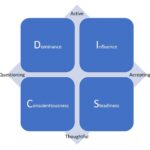When a person feels good about themselves and they do not attribute the good feeling to a specific cause, they tend to associate the cause of that good feeling with the person or people who are physically close to them at the time.
For example-when people exercise, their brains release endorphins. The release of endorphins gives individuals a rather nonspecific sense of wellbeing. Since the effects of the endorphins are not directly attributed to exercise, the good feeling can be linked to another person if they happen to be nearby. So at the end of a person’s workout, you may be associated with that good feeling if you happen to be in the right place at the right time.
If you discover that the prospect that you want to meet jogs or exercises regularly, a successful tactic is to arrange for a chance meeting during or just shortly after they complete their exercise regimen. Being in the same proximity as the prospect when endorphins are still surging through their body will allow you to take advantage of the misappropriation of memory principle. As a result, it will increase your personal appeal in the eyes of the prospect by being ass0ociated with a good feeling that comes about through the release of exercise-related endorphins.
As I discussed in Being Funny Pays Dividends in Sales, in addition to exercise, laughter also stimulates endorphin production. Telling a few jokes or showing a few videos that make a prospect laugh will cause a release of endorphins and based on the misattribution of memory principle, the good feelings will be heaped upon you.
Misattribution can also occur when people experience frightening events from a traumatic experience. Soldiers who survive combat with an enemy form deep bonds with their comrades in arms. Moreover, police officers develop close relationships with their partners after they have shared a traumatic experience.
Participating in sporting events that have an element of risk such as skydiving, bungee jumping, riding on a roller coaster or any other activities that create the perception of danger produce endorphins and feelings of happiness that can be misattributed.
Therefore, the savvy salesperson looks for ways to have meetings with potential prospects when they are inclined to still have high levels of endorphins coursing through their body. This causes the salesperson to be associated with the prospect’s good feelings through misattribution.
How can you use the principal of misattribution of memory to make the prospect associate their good feelings upon you and improve your sales conversions?












